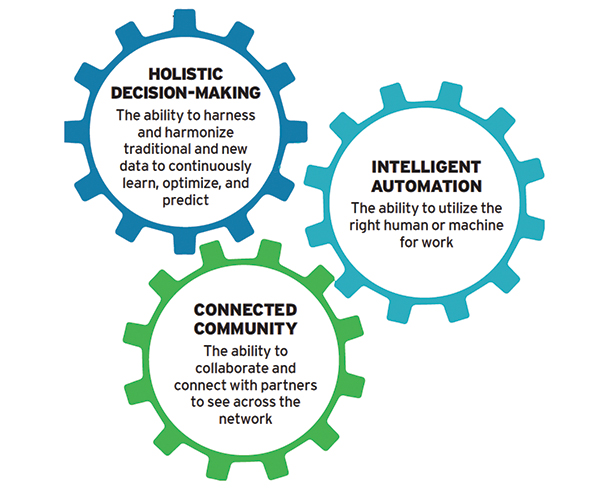Gearing Up for a Bright Supply Chain Future

Logistics providers, retailers, and other large global movers are applying a mix of enabling technologies and innovative business models to drive the efficiency and supply chain orchestration needed to meet tomorrow’s package volume demand and capture market share, finds Deloitte’s recent Future of the Movement of Goods study.
With growing e-commerce, shifting trade patterns, and infrastructure constraints, Deloitte identifies three key pillars that will likely underpin the next-generation supply chain:
1. Collaborate and connect with partners to see across the network. Horizontal partnerships and digital freight platforms connecting larger stretches of the global value chain signal the rise of a connected community, an expanding layer of digital connective tissue forming across the fragmented supply chain ecosystem.
2. Harmonize traditional and new data to continuously learn and optimize. Global movers harness a mix of connected transportation, cargo, and warehouses to evolve traditional, linear supply chains into dynamic networks capable of holistic decision-making.
3. Utilize the right human or machine for each task and automate digital processes. Foundations of a touchless supply chain are now visible as autonomous operations continue to enter pilot phases at every stage of the movement-of-goods continuum, beginning an era of intelligent automation and the collaborative power of human-and-machine logistics.
Working toward these objectives, the Deloitte study finds, can help companies evolve into integrated, intelligent, and automated end-to-end networks that can move more goods more quickly to more places.
